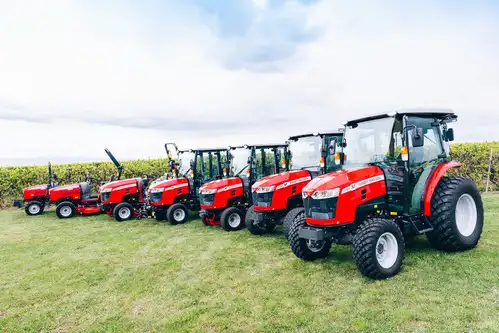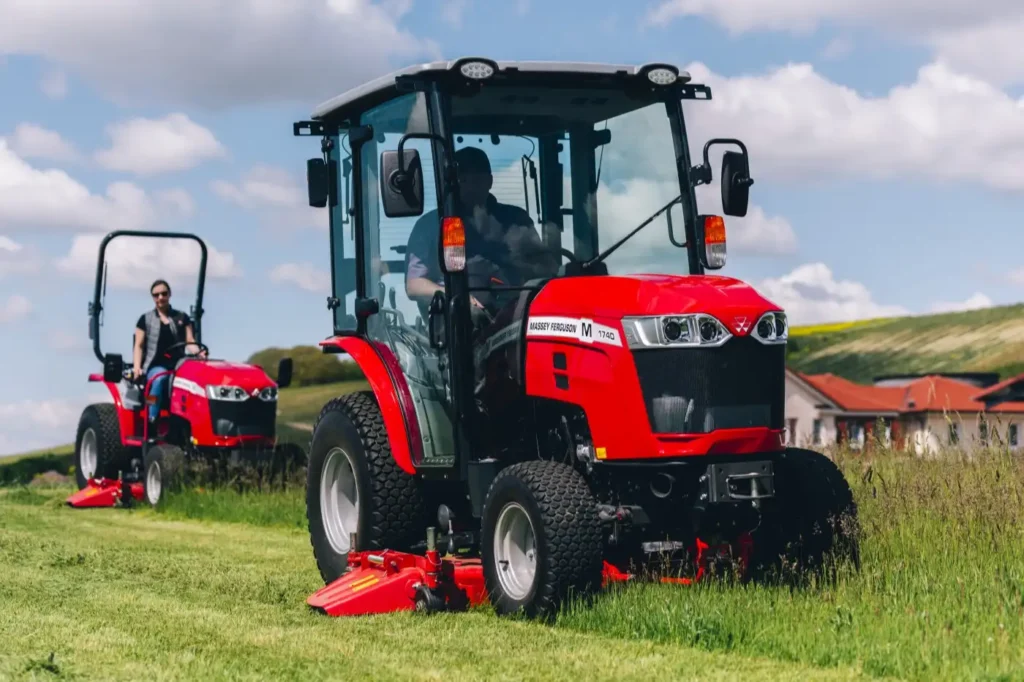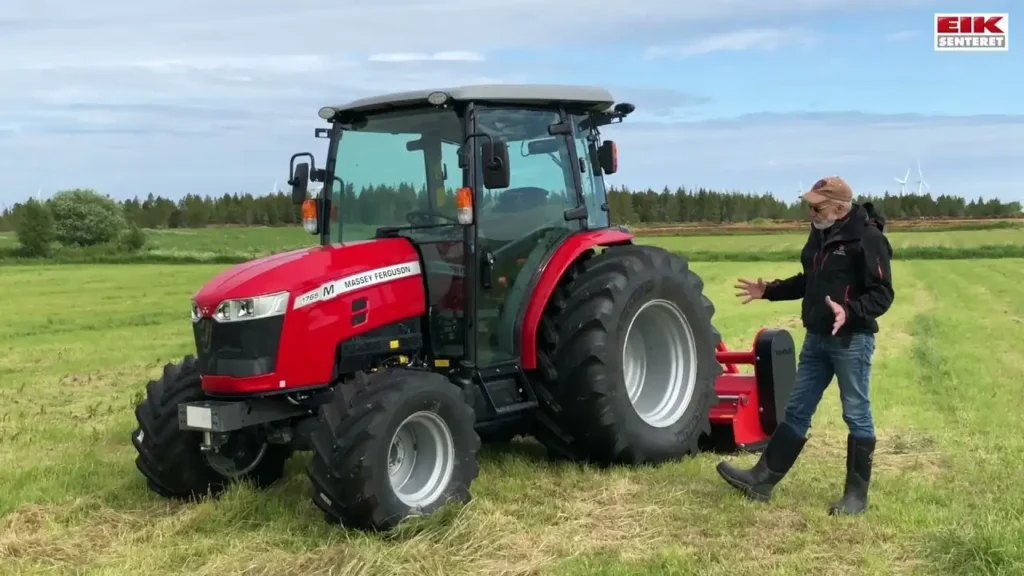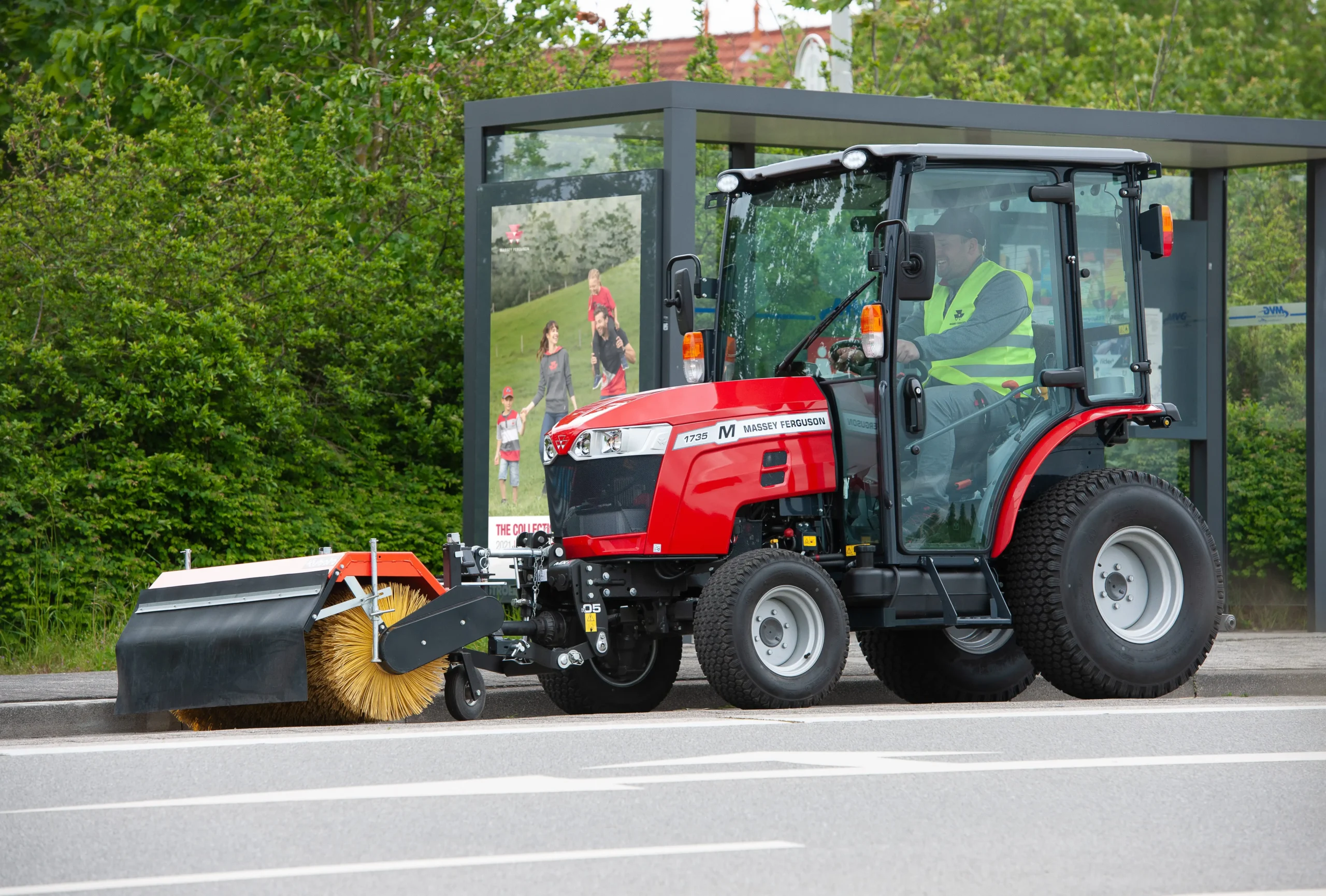Why Are Massey Ferguson 1700 Gas Pedals So Hard? Massey Ferguson has a reputation for manufacturing durable and reliable tractors, but users sometimes notice issues with their experience. One common complaint from owners of the Massey Ferguson 1700 series, particularly with models like the MF 1726E and MF 1735M, is that the gas pedal feels unusually hard to press. This can lead to discomfort and fatigue during extended use. So, why is this the case, and what can be done about it?
In this article, we’ll explore the reasons behind the stiff gas pedal on Massey Ferguson 1700 tractors, how this issue affects usability, and some practical solutions to make your driving experience more comfortable.
Understanding the Function of the Gas Pedal in Tractors
Before diving into the reasons why the gas pedal may feel hard, it’s helpful to understand the role of the gas pedal in a tractor like the Massey Ferguson 1700 series. Tractors generally have two primary pedals: the gas (or throttle) pedal and the brake pedal. The gas pedal controls the amount of fuel entering the engine, which in turn controls the speed of the tractor.
A gas pedal that’s hard to press can cause strain on your foot and leg, making it uncomfortable to operate the tractor for long periods. This discomfort becomes especially noticeable when performing tasks such as ploughing, hauling, or mowing over extended hours.

Why Are Massey Ferguson 1700 Gas Pedals So Hard?
Mechanical Nature of Tractor Controls
One of the primary differences between cars and tractors is the level of mechanical resistance in their controls. In modern cars, gas pedals are typically light and smooth, largely due to electronic systems like drive-by-wire technology that reduce the need for mechanical force. However, in tractors like the Massey Ferguson 1700 series, controls are often more mechanical, requiring direct physical manipulation of linkages and cables.
This more mechanical system means that pushing the pedal involves overcoming the natural resistance in the throttle cables and linkages. The heavier components in tractors, designed for power and durability, often translate into stiffer controls.
Causes of a Hard Gas Pedal
Several factors can contribute to a stiff gas pedal in Massey Ferguson 1700 series tractors. Understanding these causes can help you find the right solution.
Stiff Throttle Linkages and Cables
In tractors, the throttle pedal is connected to the engine via cables and linkages. Over time, these components can become stiff due to a buildup of dirt, grime, or even rust, making the pedal harder to press. Regular exposure to the elements can worsen this issue, especially in agricultural environments where tractors are often used in muddy or dusty conditions.
Proper lubrication of the throttle cables and linkages can significantly reduce the stiffness. Applying a high-quality lubricant specifically designed for heavy machinery can help keep the components moving smoothly.
Tension in the Throttle Return Spring
Another potential reason for a hard-to-press gas pedal is the throttle return spring. This spring ensures that the pedal returns to its default position when you’re not pressing it. If the spring is too strong or is placed under tension, it can increase the force required to press the gas pedal. In the Massey Ferguson 1700 series, this spring is designed for durability, but it can sometimes create an overly stiff experience for the operator.
You can either adjust or replace the spring to make the gas pedal more manageable. However, it’s important to strike a balance, as a spring that is too loose may result in throttle lag or lack of responsiveness.

Wear and Tear on Pedal Mechanisms
Wear and tear on the mechanical components of the gas pedal itself can also cause stiffness. Over time, the pivot points where the pedal connects to the floor or frame of the tractor can develop friction due to dirt accumulation or lack of lubrication.
Regular maintenance and cleaning of these pivot points can help reduce friction and make the gas pedal easier to press. Simply applying a lubricant to the joints or hinges where the pedal moves can resolve the issue in many cases.
Operator Positioning and Comfort
Sometimes, the perceived difficulty of pressing the gas pedal can stem from the operator’s seating position or comfort level. Massey Ferguson 1700 series tractors are built to handle tough jobs, and while they come equipped with comfortable seating, the alignment of the seat to the pedals may not always be ideal for every user.
Small adjustments to your seat position, or even adding ergonomic cushions, can improve the overall experience and reduce strain on your leg and foot. Ensure that you’re seated properly, with your knees at a comfortable angle to the pedals, and that your posture is correct to avoid unnecessary discomfort.
Hydrostatic Transmission Considerations
Many Massey Ferguson 1700 series tractors come equipped with hydrostatic transmission, which offers easier control over speed and direction compared to traditional gear systems. However, hydrostatic transmissions can sometimes contribute to a heavier pedal feel due to the way the transmission regulates power.
In these tractors, the gas pedal is often linked to both the engine speed and the hydraulic system. The more pressure required to move the hydraulics, the harder the gas pedal may feel. This is especially noticeable when driving the tractor at low speeds or when under heavy load. Hydrostatic transmissions often require more power from the engine, leading to a firmer pedal as the system compensates for load changes.
Cold Weather Effects
Tractors often operate in harsh environments, and weather conditions can affect how a tractor’s controls function. In colder temperatures, the fluids that help regulate throttle response can thicken, making the gas pedal feel harder to press. This is especially noticeable during winter months or in regions with cold climates.
Allowing the tractor’s engine to warm up properly can help mitigate this issue. Some owners opt to install heated throttle cables or more advanced systems to prevent cold weather from affecting the tractor’s controls.
Practical Solutions for a Hard Gas Pedal
If you’re experiencing a stiff gas pedal on your Massey Ferguson 1700 series tractor, there are several practical steps you can take to improve the situation:
Regular Maintenance and Lubrication
Regularly inspect the throttle linkages, cables, and pivot points for signs of dirt, rust, or wear. Applying the right lubricant can significantly improve the movement of these components, reducing the resistance you feel when pressing the gas pedal. Make it a habit to clean and lubricate these parts during routine maintenance.
For lubrication, products like WD-40 Specialist Heavy-Duty Grease or 3-IN-ONE Professional Garage Door Lubricant can be helpful, especially for outdoor machinery.

Adjust or Replace Throttle Return Springs
If the throttle return spring is too tight, consider adjusting it or replacing it with one that has less tension. Ensure that the spring is still able to return the pedal to its default position but without requiring excessive force to press.
Also read Why Are Furniture Dolly’s loud?
Upgrade to an Electronic Throttle Control
For those seeking a more modern solution, some owners of older tractor models opt to upgrade to an electronic throttle control system. These systems reduce the mechanical resistance in the gas pedal, providing a smoother, more car-like feel. This may require an investment, but it can significantly enhance the operator experience, especially during long workdays.
Adjust Seating for Ergonomics
Make sure that your seat is properly aligned with the pedals, and adjust it for optimal comfort. If necessary, use ergonomic cushions to help position your legs at a better angle, reducing strain on your foot when pressing the gas pedal.
Warm Up the Tractor in Cold Weather
In cold climates, give the tractor time to warm up before use. This allows the fluids in the hydraulic system and engine to reach an optimal temperature, making the gas pedal easier to press. You might also consider using a synthetic oil that performs better in cold temperatures.
Conclusion
A hard gas pedal on your Massey Ferguson 1700 series tractor can be an inconvenience, but it’s a manageable issue with the right approach. Whether it’s addressing mechanical stiffness through regular maintenance, adjusting the throttle spring, or upgrading to modern systems, there are practical solutions that can improve your tractor’s usability.
By taking care of your tractor and ensuring it’s properly maintained, you can reduce pedal resistance and enjoy a smoother, more comfortable driving experience, allowing you to focus on the tasks at hand without unnecessary strain.
If you’re experiencing persistent issues, it might be worth consulting with a certified Massey Ferguson technician or dealer, as they can provide further insights and solutions tailored to your specific tractor model.





